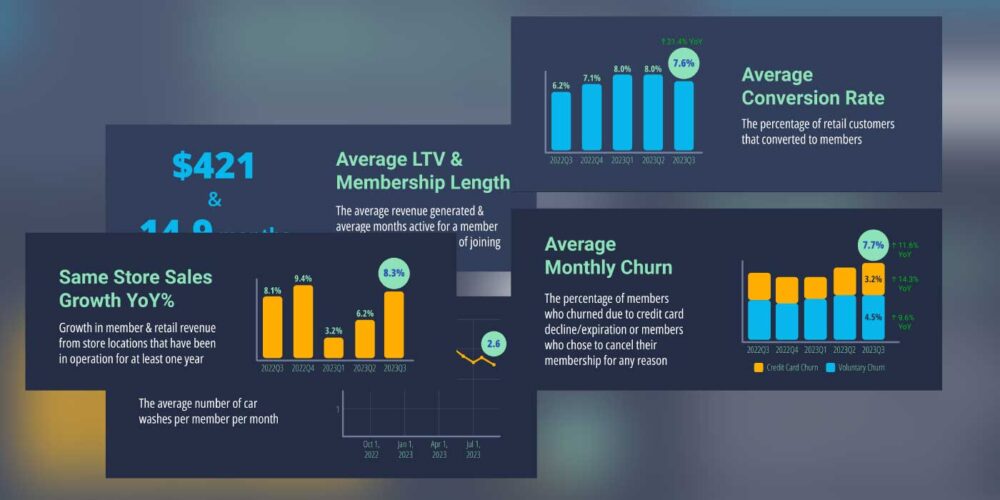For a long time — too long in fact — customer data has been undervalued in the carwash industry. For every one operator who believes that the more knowledge they have about their customers and, with that understanding, the more effectively they can retain and recruit others fitting the same profile, there are 10 operators who are simply happy to record a new member’s name and credit card details and call it a day. That’s a sub-optimal approach and one that is frankly out of step with every other subscription-based business, from Netflix to Dollar Shave Club to your local gym chain — none of which are shy about collecting as much customer data as possible as a foundational element of the signup process.
When we talk about “customer data,” we are talking about two categories. First, contact information for your (current or potential) members or retail customers. Second, demographic and behavioral data about these groups (age, sex, vehicle type, frequency of
visits, etc.) that will help you refine your marketing efforts. The first category is foundational, while the latter is where your focus should be after you have built out the first.
In this article, when we say “customer data” we will be referring to basic contact info for members and non-members, which is where everyone should start.
Why collect customer data?
In our organization, we have heard every excuse in the book for not getting emails and cell numbers from members or retail customers taking part in a promotion. These include:
• “People don’t want to give us their contact info.”
• “It slows down throughput.”
• “We don’t use this data for anything anyway.”
At the end of the day, here’s why getting that data is worth it.
Market to your best-fit buyers
Believe it or not, not everyone who owns a car is your ideal customer. Collecting
contact info for people who have expressed an interest in your product, whether by signing up for your email list, providing their info to get a free wash or, best of all, actually becoming a member, separates the wheat from the chaff. Congratulations. You now have a warm audience that knows who you are and is primed to receive marketing messages and offers from you — and they are most likely to take you up on them.
It sure beats targeting everyone and their mother. When you introduce data analysis into the equation and start looking at visit frequency, membership tenure and lifetime value, that’s when you really pour gasoline on the fire and are able to get every last dollar of ROI out of your marketing efforts.
Reduce churn
No matter how great your site, some degree of voluntary member churn is inevitable — people tighten their belts, move out of town, sell their cars, etc. What is not inevitable is involuntary churn, where members don’t intend to leave, but, due to credit card recharge issues, their memberships are eventually canceled when payment cannot be processed. If you had contact info for your members, you could enroll them in an automated email or text series that sends them a reminder when their credit card has been declined or is about to expire, prompting them to update their payment details to continue their membership without disruption.
Depending on the size of your operation, this could mean retaining tens of thousands of dollars in monthly revenue that would have been lost if you couldn’t reach those about-to-churn members.
Communicate with members and customers
Changing your prices? Modifying hours for a holiday? Temporarily closing for renovations? Without contact info, you cannot effectively and proactively let customers and members know about events that will affect their on-site experience. When you see the 10th angry Google review accusing you of raising prices without letting customers know in advance, you will wish you had the email addresses of those customers.
How to effectively collect customer data
So, let’s say you have bought in on the importance of collecting customer data and you’re committed to doing it going forward. How do you get started?
Make it digital
Your goal for the data collection process should be to make it as frictionless as possible for customers and your attendants. This means moving away from manual, handwritten member signups via rack cards or other forms. Not only are handwritten forms time-consuming to fill out, but they also have a high error rate — people skip fields, attendants misspell names when typing them into the system, etc. Tablet or phone-based digital signup forms are faster for both the attendant and customer and dramatically cut down on user error.
Offer something in return
Worried that customers won’t want to give you their info? Make it easy for people to say yes by offering them something of value in return. Invest in a little quid pro quo. Make email collection a non-negotiable aspect of any free wash campaigns you run. Incentivize members with the chance to win a prize if they complete a customer care feedback survey. A small token of appreciation tells your customers that you understand that their data has value, which makes them more likely to share it with you.
Start small
If you don’t currently have any customer data beyond names and credit card numbers, don’t expect to go from zero to 60 overnight. Start with putting a process in place to collect emails and cell numbers for new members you sign up going forward. Let this be your last data-free day. Then, turn to backfilling info for your existing database of members, maybe with an incentivized survey, which also
delivers the bonus of providing you with rich behavioral and attitudinal data you can use to shore up any identified weak spots in your customer experience.
Finally, think about how to collect data from potential customers going forward and start building a prospect database to market to. This could include tactics like offering a free wash in exchange for signing up for promotional emails or joining your text club.
The bottom line is that collecting accurate, complete customer data doesn’t need to be complicated or burdensome for your staff or customers. Done right, it’s a seamless aspect of your overall customer experience and a powerful tool to help you drive greater loyalty and
revenue.
Dan Flatley is the president of Suds Creative, a DRB company focused exclusively on data-led carwash marketing.














